People often think of sausages and sauerkraut when they hear about German food, but bread deserves just as much attention. Bread isn’t a side note in Germany. It’s a daily basic, served from breakfast to dinner, and it can easily be the main star of a meal. Germany is famous for its huge variety and great taste in bread. This guide takes a close look at German bread, its key traits, main types, and regional favorites.
German bread is more than food; it’s part of the culture, built on centuries of careful baking. Many visitors miss German bread after they leave because it’s hard to find the same quality and range elsewhere. If you like crusty, flavorful, and hearty loaves, Germany offers a wide range that’s hard to beat.

Why German Bread Variety Is Unique
Germany has one of the widest bread selections anywhere. This is well documented. Geography, weather, and history all shaped how people bake, leading to many local styles.
German bread stands out for its use of many grains, especially rye, wheat, and spelt. Many recipes use sourdough, which adds a tangy taste and a chewy bite. Long fermentation is common and helps build flavor and texture, giving breads a deep taste and a satisfying crumb. From light rolls to dark, dense loaves with seeds, there’s something for every taste.
How Many Types of German Bread Exist?
There are a lot. The German Bread Institute notes that more than 3,000 kinds of bread and baked goods are sold in Germany each day. You’ll often see claims of about 300 main bread types and 1,200 pastries and rolls. No matter the exact count, the range is huge and reflects a strong baking tradition. Since 2014, German bread culture has been part of the country’s intangible cultural heritage.
Exploring German bread never really ends. Regions-and sometimes single towns-may have their own spin on classics or introduce new ideas. Tradition and new methods sit side by side, with a steady focus on quality.
German Bread Types List by Grain and Style
People often group German breads by the main grain. This helps make sense of the many choices. Rye gives earthy notes, wheat is lighter, and whole grains bring hearty flavor and nutrition.
Sourdough is common and adds depth. Grain ratios, flour types, and extra ingredients (like seeds) shape the taste and texture you find across German bakeries.
| Category | Main grains | Texture | Common leaven | Typical examples |
|---|---|---|---|---|
| Rye (Roggenbrot) | Mostly rye | Dense, moist | Sourdough | Pumpernickel, Krapfbrot |
| Whole-grain (Vollkornbrot) | 90%+ whole grain | Chewy, hearty | Sourdough | Rye and wheat whole-grain loaves |
| Wheat (Weißbrot) | White wheat | Soft, fluffy | Yeast | Loaves, rolls |
| Mixed-grain (Mischbrot) | Rye + wheat | Soft, moist | Sourdough or yeast | Graubrot |
| Multigrain/Seeded | Rye, wheat + oats/spelt/barley | Dense, seeded | Often sourdough | Mehrkornbrot, Dreikernbrot |

Rye Breads (Roggenbrot and Variations)
Rye bread, or Roggenbrot, is a core part of German baking. It usually has a sourdough tang, a dark color, and a moist, dense crumb. Shapes and sizes vary widely.
You’ll find many kinds: whole wheat rye, rye whole meal with sunflower seeds, and mixed wheat-rye loaves with a spiced crust. Pumpernickel is the most famous: a very dark rye bread made with black rye flour and baked low and slow for a long time, giving it a dense bite and deep, earthy taste. Another favorite is Krapfbrot, a softer white rye bread made with baker’s yeast.
Whole-Grain Breads (Vollkornbrot)
For nutrition and strong flavor, Vollkornbrot leads the way. “Vollkorn” means “whole grain,” and these breads usually use at least 90% whole grain flour. Bakers blend whole wheat, rye, and sometimes spelt or oats for varied taste and texture.
Vollkornbrot is known for a chewy, dense crumb and a hearty taste, often with sourdough’s tang. Longer bakes create a dark crust and a satisfying chew. High in fiber and rich in nutrients, it works well with cheese, cold cuts, honey, or jam.
Wheat Breads (Weißbrot)
Germany loves its dark loaves, but Weißbrot (white bread) is popular too. Made with white wheat flour, yeast, water, and salt, it has a soft, light crumb and a mild flavor.
Weißbrot appears as loaves or rolls and is handy for sandwiches or as a side. It’s lighter in nutrients than whole-grain breads, but its gentle taste and soft crumb make it a favorite. It’s also used for dishes like German-style French toast or bread pudding.
Mixed-Grain Breads (Mischbrot)
Mischbrot means “mixed bread.” Most German bakeries sell many of these loaves. They blend wheat and rye, often with sourdough. If the loaf has more than 50% rye, it’s a “Rye Mischbrot.” If it has more than 50% wheat, it’s a “Wheat Mischbrot.”
Mischbrot balances flavor and texture: milder than pure rye and softer inside. It’s great with meats, cheese, or jam. In some areas, it’s called Graubrot (“gray bread”) for its color, which sits between white and dark rye.
Multigrain and Seeded Breads (Mehrkornbrot, Dreikernebrot)
If you like crunch and extra nutrients, multigrain and seeded breads are a good pick. Mehrkornbrot (“multigrain bread”) blends several grains-often whole wheat, rye, oats, barley, or spelt-with seeds like sunflower, pumpkin, and sesame.
These loaves are dense and chewy with a hearty taste and good nutrition. Many use sourdough for a gentle tang and a dark, crisp crust. Dreikernbrot (“three seed bread”) usually includes rye, wheat, and oats, plus seeds such as sunflower, pumpkin, and flax. The seeds add a nutty crunch and boost the bread’s value at the table.
Popular Regional German Breads
Regional baking shapes much of Germany’s bread identity. Each state, and even small areas, has its own favorites. Local ingredients, old methods, and taste preferences all play a role, making a trip through Germany a treat for bread lovers.
From classic farmer’s bread to famous Pumpernickel, these local breads show the range and skill found in German baking. Tasting them is a direct way to learn about food traditions across the country.
Bauernbrot (Farmer’s Bread)
Bauernbrot is one of Germany’s most loved loaves. It’s a rustic, dark bread known for keeping well and offering good nutrition. Bakers usually mix rye and wheat (often about two parts rye to one part wheat) and use sourdough.
A well-made Bauernbrot has a thick, crunchy crust and a soft, moist interior. It’s often round with cuts on top. Use it for sandwiches, serve with cheese and cold cuts, or slice it for small bites. Its full flavor and everyday usefulness keep it popular nationwide.

Pumpernickel
Pumpernickel is perhaps Germany’s best-known bread, recognized by its very dark color, dense texture, and unique taste. It comes from Westphalia and is made with all rye-black rye flour and whole rye grains-with a little wheat flour at times. What makes it special is the very long, gentle bake.
The dough, made with sourdough cultures, bakes in steam for at least 16 hours and up to 24. This slow, moist heat sets the loaf without a regular crust, giving a soft, moist slice and a deep flavor, sometimes slightly sweet from molasses or caramel coloring. High in fiber, Pumpernickel works well for sandwiches and can anchor appetizers like cream cheese with smoked salmon.
Berlin Rye
Berlin’s classic bread is often called “Berlin Rye” or Berlin country bread. It usually has a high rye content with wheat and malt added, giving it a distinct taste and character found in many German rye loaves.
Like many breads from Germany, it often uses sourdough, which adds flavor and a firm, satisfying crumb. It pairs well with cold cuts, cheese, and spreads. It’s a favorite at Abendbrot (evening bread), a simple German supper. Its hearty nature reflects Berlin’s food traditions.
Schwarzbrot (Black Bread)
Schwarzbrot means “black bread,” though it’s really a very dark brown. Don’t confuse it with Pumpernickel, even if both are dark and rye-heavy. Schwarzbrot is usually made from whole meal rye and often has no wheat at all.
Because it’s rich in rye, Schwarzbrot is high in fiber and offers solid nutrition. It can be a bit dry and firm, so many bakers add sugarcane syrup for color and moisture. People often eat it with cheese, Quark, or cold meats. It brings a strong taste to a simple meal.
Kartoffelbrot (Potato Bread)
Kartoffelbrot uses potatoes in the dough, which adds flavor and makes the crumb very moist. Bakers often mix wheat and rye flour with yeast, salt, and mashed potatoes, sometimes adding milk or butter. Potatoes make the bread tender and add to the overall taste.
This bread is usually round with cuts on top. It’s soft and airy, great for sandwiches or as a base for snacks. Leftover Kartoffelbrot can be used in German dishes like potato dumplings (Kartoffelknödel), showing how useful it is in the kitchen.
Krustenbrot (Crusty Artisan Bread)
Krustenbrot means “crusty bread.” It’s loved for its thick, crackly crust and dense, chewy inside. Bakers often blend rye and wheat flours and add sourdough, salt, and sometimes a little molasses or honey.
Its deep flavor comes from long fermentation, which builds nutty notes. It’s often round with a scored top. The crisp crust pairs well with strong cheeses, cold cuts, and spreads. It also works in dishes like Rindfleischbrot, where thin slices hold roast beef.
Traditional German Bread Rolls and Pastries
Besides loaves, German bakeries shine with rolls and pastries. These smaller items make easy snacks, round out breakfast, and sit beside many meals. They show the same care for flavor and texture as larger breads.
From daily rolls to the classic pretzel, these items are part of everyday life and local celebrations, with styles that vary by region.

Brötchen (Bread Rolls)
Brötchen means “small bread.” These rolls are everywhere in Germany. They have a crisp crust and a soft, fluffy center. Made with wheat flour, yeast, water, and salt, they come round, oval, or long, sometimes topped with sesame or poppy seeds.
The German Bread Institute lists them as “small baked goods,” but their popularity is clear. They’re a breakfast must-have with cheese, ham, or eggs, and they make great snacks. Names change by region-Semmel, Weck, Schrippen, Rundstück-and they also appear in classics like Weißwurstfrühstück, where a soft roll sits beside white sausage and sweet mustard.
Laugenbrezel (Pretzels)
The Laugenbrezel, or pretzel, is a well-known symbol of German baking with roots going back to Roman times. Its twisted shape stands out. The dough goes through a key step: a short boil in a lye (baking soda) solution before baking. This creates a dark, shiny crust, a chewy interior, and a special taste.
Southern Germany loves pretzels as a snack, often with coarse salt, and they pair well with beer. Toppings like poppy or sesame seeds are common. You’ll also find pretzel rolls, sticks, and buns for sandwiches. While usually savory, sweet versions exist too.
Festive and Specialty German Breads
German baking also features special breads for seasons and holidays. These loaves often use richer dough, gentle spices, or dairy, turning simple ingredients into treats for celebrations.
From spiced Christmas loaves to breads with cheese, butter, or mustard, these recipes show the range and local flair of German baking.
Stollen (Christmas Bread)
Stollen is a classic Christmas bread in Germany. This sweet yeast loaf is full of raisins, candied orange and lemon peel, almonds, and warm spices like cinnamon, cardamom, and nutmeg. People enjoy it during Advent.
The dough is shaped into an oval and folded, making a raised ridge that many say resembles the swaddled Christ child. After baking, it gets brushed with butter and covered in powdered sugar. Some versions add marzipan or rum-soaked raisins. Eat it with coffee or tea, or serve it for breakfast with butter or jam.

Quarkbrot (Quark Bread)
From Mecklenburg-Vorpommern comes Quarkbrot, made with Quark, a fresh dairy product like cottage cheese or thick yogurt. Quark gives the loaf a soft crumb and a light tang that sets it apart from standard rye or wheat breads.
It stays moist and tender. Recipes vary, but the texture is often lighter than many dense German loaves. Enjoy it with butter, sweet spreads, or savory toppings. It’s a good example of how local ingredients shape regional bread.
Senfbrot (Mustard Bread)
If you like bold flavor, try Senfbrot, or mustard bread. Popular in some areas, it uses mustard for a sharp, slightly spicy taste. The dough often blends wheat and rye with yeast, salt, and mustard seeds, prepared mustard, or both.
It can be baked as loaves or rolls. The strong flavor pairs well with meats and cheeses and works for open-faced sandwiches. In some dishes, like Senfeier (eggs in mustard sauce), crumbs of Senfbrot go into the sauce, showing its wider use in local cooking.
Frequently Asked Questions about German Bread Types
German bread covers a lot of ground, so people often have questions. Here are clear answers to common topics so you can enjoy and recognize the main styles more easily.
Whether you want the most popular choices or options that fit your diet, these points will help.
What Is the Most Popular Type of German Bread?
Picking one winner is hard, but mixed-grain breads, or Mischbrot, are very popular. They make up nearly a third of bread purchases in Germany. These loaves blend rye’s depth with wheat’s lighter texture.
Other loved choices are Roggenbrot (rye bread) for its sourdough taste and dense crumb, and Weißbrot (white loaf bread) for a classic mild option. And Brötchen (bread rolls) are everywhere for breakfast and snacks. While rolls are counted separately from “bread,” many households buy them daily. Tastes vary by region, but mixed-grain and rye breads, along with rolls, are steady favorites.
Are There Gluten-Free German Bread Options?
Traditional German breads use wheat or rye, which both contain gluten. Still, gluten-free choices are becoming easier to find as demand grows. People with gluten intolerance or celiac disease have more options now than in the past.
Some bakeries and health food stores sell gluten-free German-style loaves. These often use almond, coconut, or rice flour, sometimes mixed with other gluten-free grains or starches to get a similar taste and texture. While they’re different from standard loaves, they let more people enjoy German-style bread. Check labels and ask bakers about their gluten-free lineup.

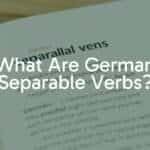
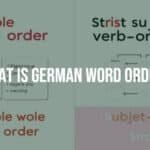



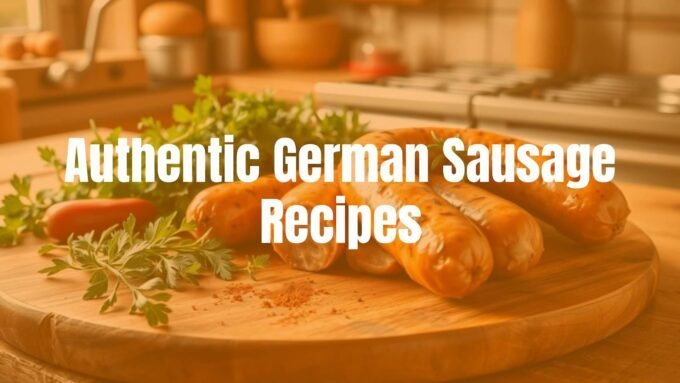
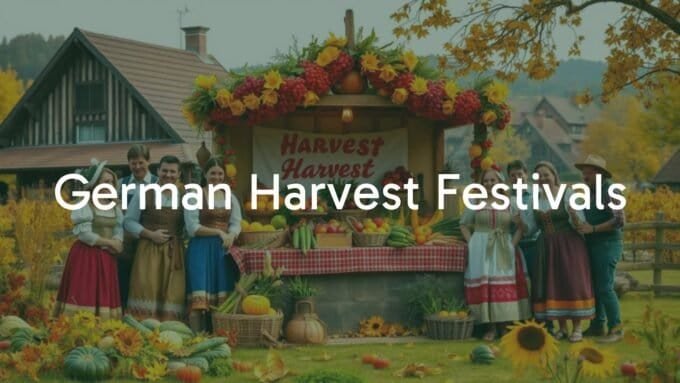



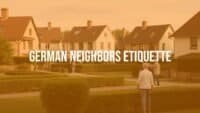
Leave a comment